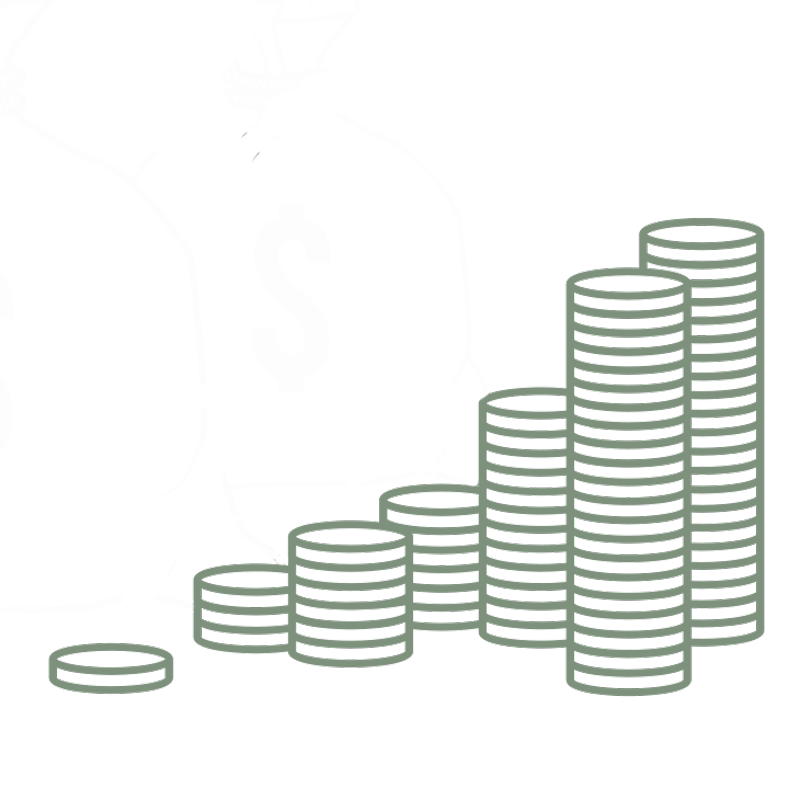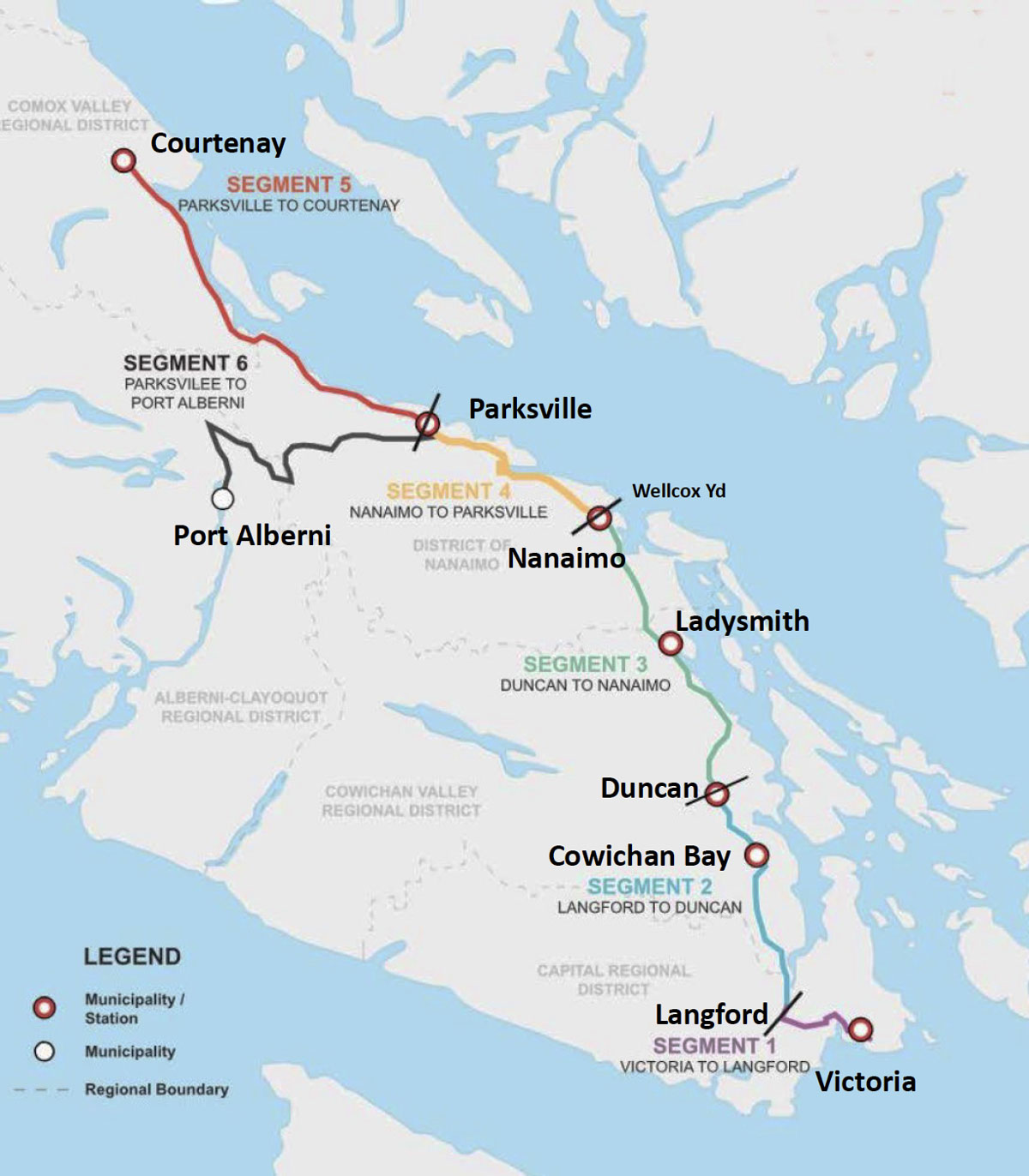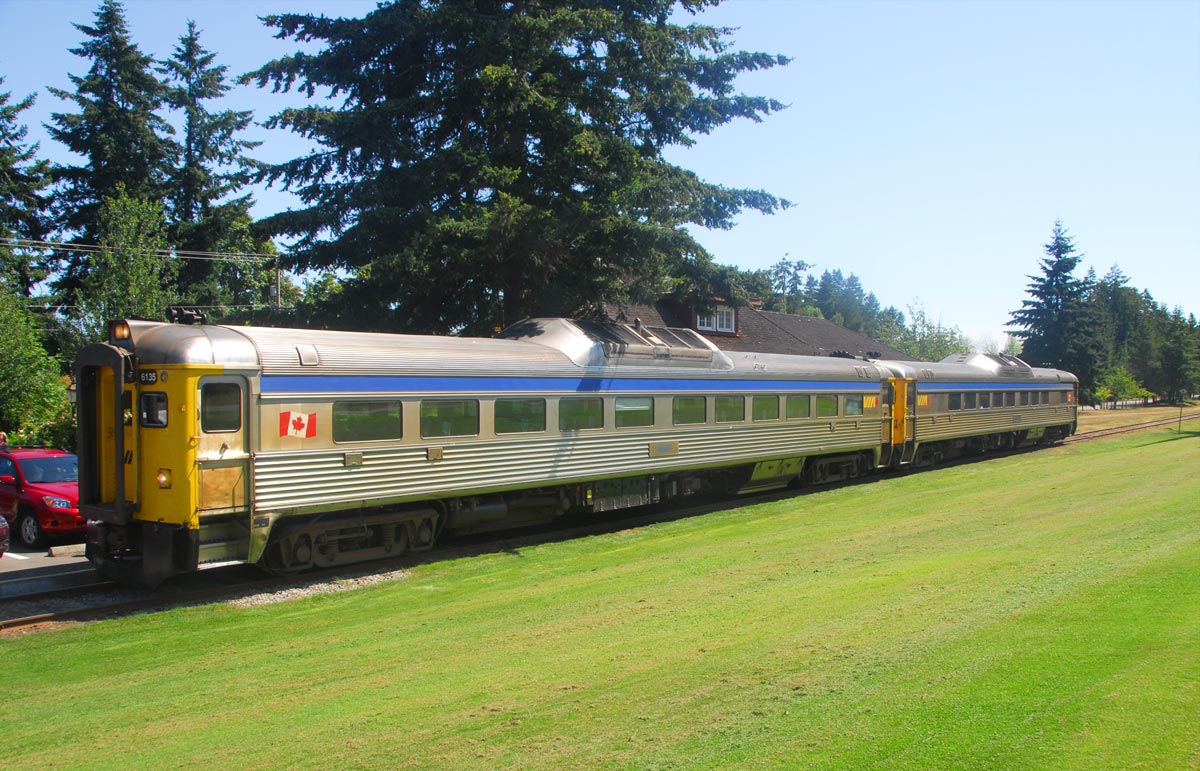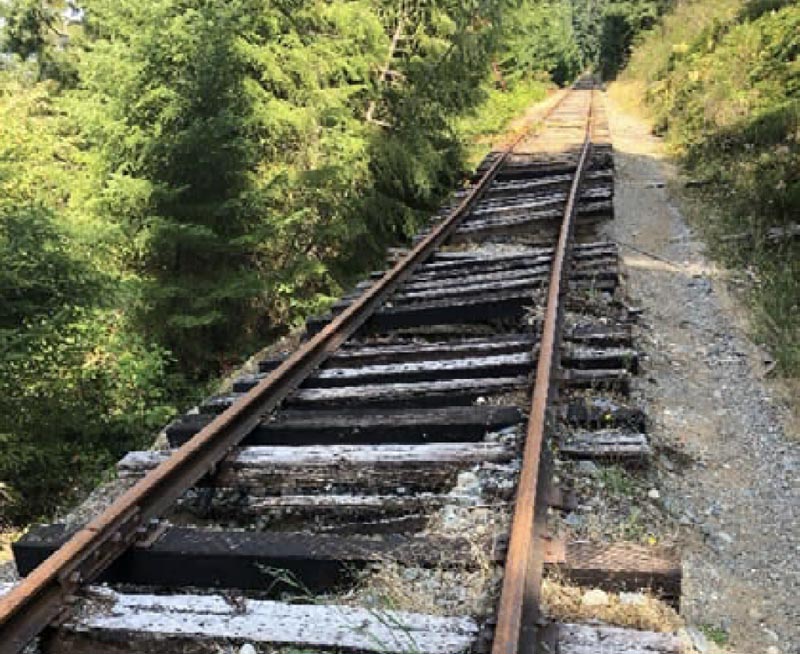E&N 9023 RDC Train 1 at Victoria, BC on November 10, 1969.
As the population of the Island increases and the traffic gets more congested, restarting train service on the Island Rail Corridor seems like a no-brainer. But let's consider this carefully:

The E&N was built for low-speed transportation
The railway was built in the 1870’s to carry coal more efficiently than in horse drawn wagons. An act of Parliament allowed it to be built cheaply with tighter curves and steeper grades than were normally allowed. This means the maximum allowable speed on the tracks is about 65 km/hr, eliminating any kind of rapid transit on the existing corridor even if the rails were replaced.

Rebuilding the tracks will be expensive
Given the above constraints it could easily cost over $1 billion to create a train that would be fast and frequent enough to attract a viable ridership. A report commissioned by the Ministry of Transport in 2020 put the cost of one train per day, traveling at only 55 kmh over the Malahat, at close to $400 million. With current inflation rates that figure would be substantially higher now, for a train that would not be used. There are better uses for that money.

The train will probably be diesel-powered

The train will not really eliminate traffic
A consultant studying the Malahat found the train would carry just 1% of the traffic on the Malahat for an operating subsidy of $1 million a year. This demand could be met by express buses at half the cost without the massive costs of rebuilding a Victorian era railway. Rather than spend hundreds of millions on rail let's buy hundreds of electric buses to lessen traffic and lower the impact on the climate.
Are you just cranky train haters? No. Many FORT-VI members long advocated for rail service to be renewed on the Island Rail Corridor. Eventually they realised that rebuilding the tracks was prohibitively expensive and impractical. While politicians delayed, the corridor was falling into corrosion and decay. If sufficient funding ever becomes available and a solid business case is made, FORT-VI is not opposed to switching the trail to a train line again.

 The main section of the Island Rail Corridor is 225 kilometres long from Victoria to Courtenay. A branch line stretches from Parksville to Port Alberni and is 64 kilometres long for a total of 289 km of mainline track.
The main section of the Island Rail Corridor is 225 kilometres long from Victoria to Courtenay. A branch line stretches from Parksville to Port Alberni and is 64 kilometres long for a total of 289 km of mainline track.
